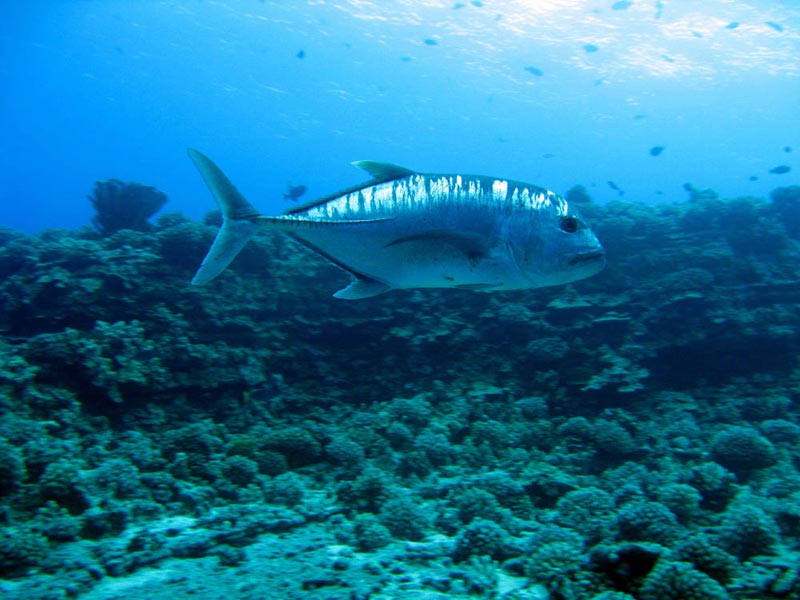Bigeye Jack
ulua
Caranx sexfasciatus
Most jacks or trevallies are swift predators that frequent open water near dropoffs or over reefs. They are usually bluish or greenish on the back, and silvery on the sides and undersides, which makes them difficult to spot from above or below. Jack's bodies are streamlined, deep, and narrow with deeply forked tails. Their hunting behavior intensifies in the early morning or late afternoon. To isolate or confuse their prey, schools of jacks make sudden and quick changes of direction. They use their speed to hunt and feed on other fish, and they forage on the bottom for crustaceans and other invertebrates. There are at least 24 known jacks in Hawai'i.
The scientific name of the Bigeye Jack means "six banded", but only pāpio (juveniles) display this pattern. The point of the second dorsal fin is white, and the upper edge of the gill cover has a black mark. This fish usually feeds at night, but they may be seen foraging during the day in shallow water. They often gather in tight schools when they are not feeding. They grow up to 3 feet.
